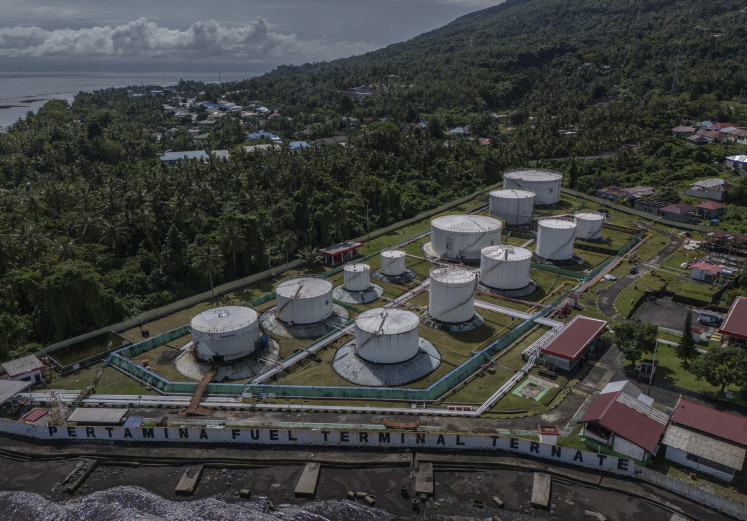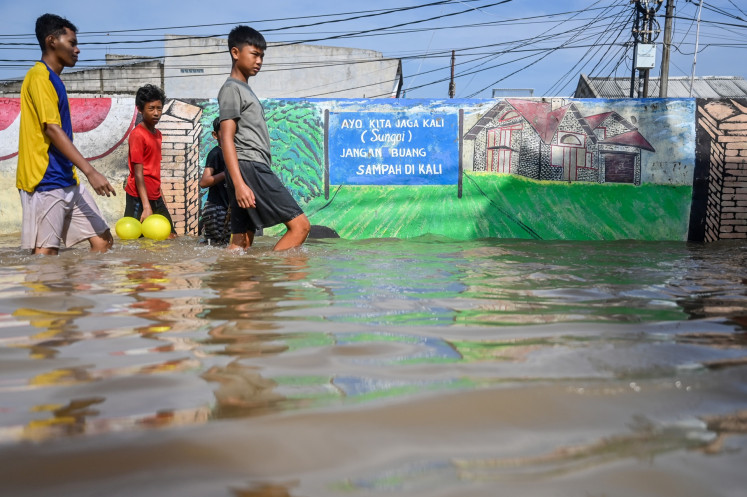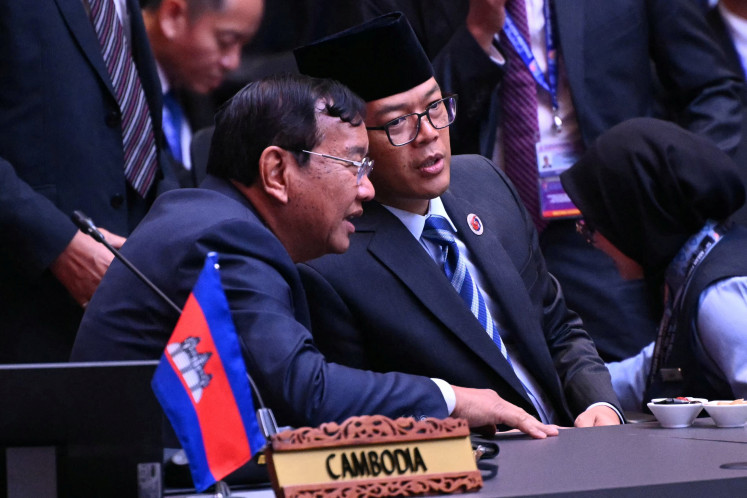Popular Reads
Top Results
Can't find what you're looking for?
View all search resultsPopular Reads
Top Results
Can't find what you're looking for?
View all search resultsResponsibility of the state in the mudflow disaster
In the aftermath of a disaster, the government is under the political, moral, and legal obligation to provide relief and assistance to victims
Change text size
Gift Premium Articles
to Anyone
I
n the aftermath of a disaster, the government is under the political, moral, and legal obligation to provide relief and assistance to victims. This is certainly the case for the Indonesian government in regards to the mudflow disaster in Sidoarjo, East Java. The question of how the government should properly respond to the disaster has even become an issue in our presidential debate.
So far, the government has dealt with the mudflow disaster by relying on the implementation of Presidential Regulation No. 14/2007, which was subsequently amended by Presidential Regulation No. 48/2008. The regulations provide the legal basis for the sharing of responsibility between the government and Lapindo Brantas, Inc., whose gas drilling operation is allegedly responsible for the ongoing problem. According to these regulations, Lapindo Brantas has the obligation to control the mudflow and to buy the land and houses of the victims in villages specified by Presidential Regulation No. 14/2007.
Meanwhile, the government, through the newly formed Sidoarjo Mudflow Management Agency (BPLS), is responsible for the more general management of mudflow disaster and, in particular, compensating victims who resided in villages outside the area specified by the regulation.
Yet it seems that the government's involvement in the mudflow disaster will soon take a step up, as the House of Representatives and the BPLS have agreed that the government should assume responsibility for the mudflow disaster from Lapindo Brantas (The Jakarta Post, June 19, 2009). As the Post's report indicates, the reason for this development is that the two regulations are no longer considered enough to handle the continuing problem.
To analyze whether or not the proposal for larger government involvement in the management of the mudflow disaster is justifiable, one needs to look at both the legal and economic perspectives.
On the one hand, any government intervention should aim at providing the victims with full compensation. According to Cooter and Ulen, full compensation is achieved when victim indifferent to the situation of injury plus compensation and the situation without injury(R. Cooter and T. Ulen, 2000). On the other hand, intervention should also be able to attribute the financing of the compensation and rehabilitation to the parties that have contributed to the damage.
Attributing responsibility for compensation and rehabilitation to the culprits is of paramount importance because, by exposing them to future liability, incentives for those responsible to internalize all environmental costs and to take ex ante precaution accordingly are created (M. Faure and T. Hartlief, 2003). From these two interrelated aspects, it follows that any government intervention to provide relief and assistance may in no case violate the so-called polluter-pays principle; a principle that has been recognized by the Indonesian Environmental Management Act (EMA).
Unfortunately, the current compensation scheme is incapable of providing victims with full compensation. For one thing, the fact that the majority of victims still have not received the compensation promised by the regulations shows the current scheme has failed to provide the victims with prompt compensation. For another, the current scheme only compensates damage to property but leaves pain and suffering unaddressed.
Furthermore, the current compensation scheme is incongruous with the polluter-pays principle, as, so far, it is unclear that the government will exercise recourse against potentially liable parties. This situation has sparked severe and valid critiques because, by allowing the use of public funds for an allegedly man made disaster, the government is actually protecting the alleged responsibly party, and not the victims. In this sense, the government could be considered to be providing disguised subsidies to the polluters, and hence, is in violation of the polluter-pays principle.
Based on these essential weaknesses of the current compensation and rehabilitation scheme, we can draw two immediate conclusions.
First, the proposal that recommends the government assume a greater role in dealing with the mudflow disaster should be welcomed enthusiastically. Direct compensation by the government is indeed superior and more beneficial to the victims than the current compensation scheme, in which Lapindo Brantas plays a significant role.
However, one should note that such a proposal has to be applicable for all victims. This means that the proposal should really allow the government to take over all of Lapindo Brantas's current responsibilities. In addition, such a proposal should also enable the victims to obtain full compensation, including compensation for loss of income, injury, pain and suffering. If the proposal is only able to provide direct compensation for property damage, the government cannot subrogate the rights of the victims against the alleged responsible party for uncompensated damages.
Second, in order to restore the polluter-pays principle, the use of the government's legal standing, as provided for in article 37(2) of the EMA, inevitably becomes an integral part of the proposal. This means that after taking over responsibility from Lapindo Brantas, the government should immediately file a lawsuit against all potentially liable parties in order to ensure public funds used in the management of the disaster are recovered. The government exercised its legal standing in such a way in the Buyat Bay case, and hence, there is no reason it should not use similar recourse in the mudflow disaster.
Undoubtedly, this arrangement is the only solution for the government if they seriously intend to provide prompt and full compensation for the victims and to manage the mudflow disaster properly, as well as avoid giving a disguised subsidy to those allegedly responsible.










